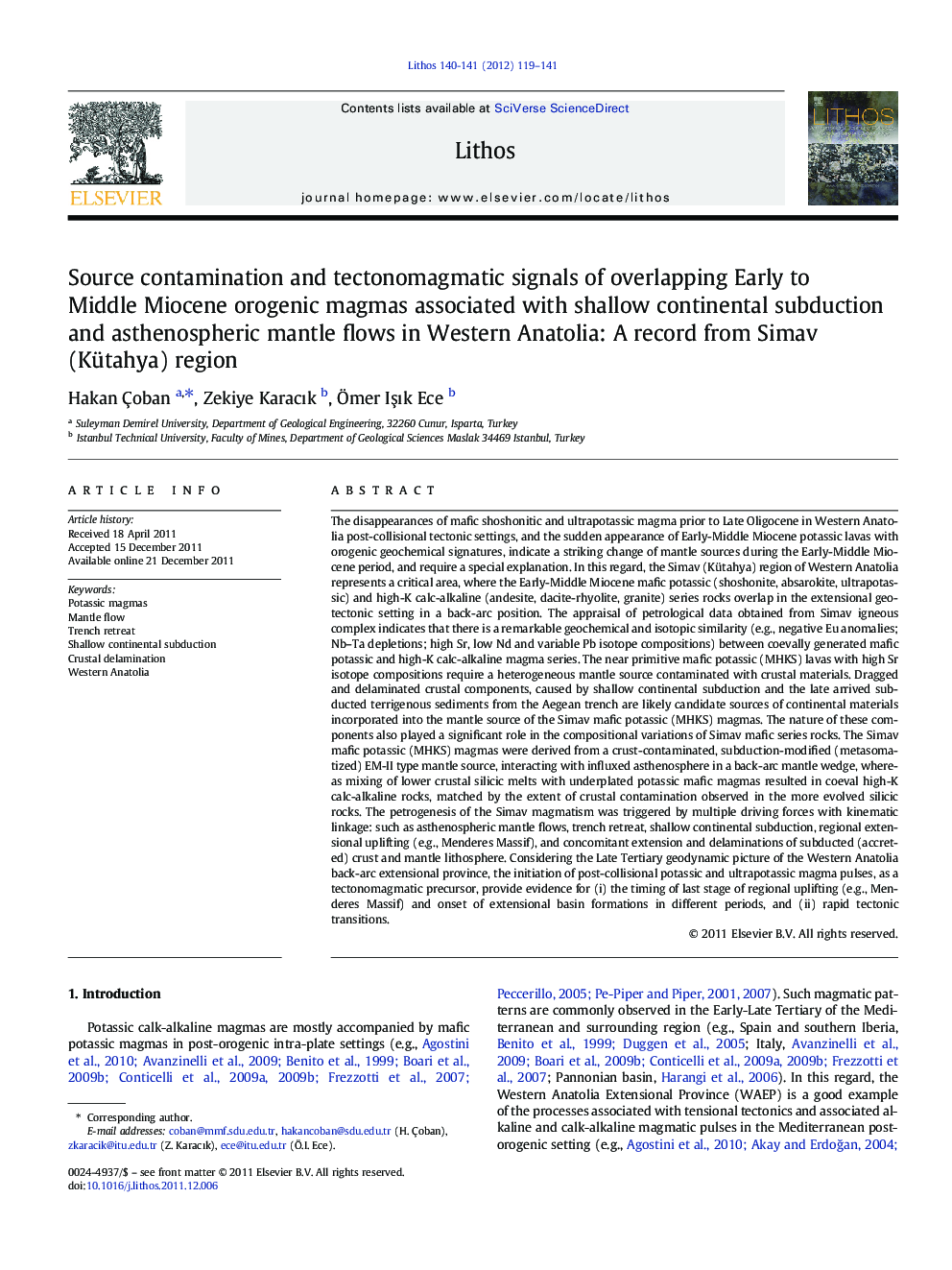| کد مقاله | کد نشریه | سال انتشار | مقاله انگلیسی | نسخه تمام متن |
|---|---|---|---|---|
| 4716621 | 1638709 | 2012 | 23 صفحه PDF | دانلود رایگان |

The disappearances of mafic shoshonitic and ultrapotassic magma prior to Late Oligocene in Western Anatolia post-collisional tectonic settings, and the sudden appearance of Early-Middle Miocene potassic lavas with orogenic geochemical signatures, indicate a striking change of mantle sources during the Early-Middle Miocene period, and require a special explanation. In this regard, the Simav (Kütahya) region of Western Anatolia represents a critical area, where the Early-Middle Miocene mafic potassic (shoshonite, absarokite, ultrapotassic) and high-K calc-alkaline (andesite, dacite-rhyolite, granite) series rocks overlap in the extensional geotectonic setting in a back-arc position. The appraisal of petrological data obtained from Simav igneous complex indicates that there is a remarkable geochemical and isotopic similarity (e.g., negative Eu anomalies; Nb–Ta depletions; high Sr, low Nd and variable Pb isotope compositions) between coevally generated mafic potassic and high-K calc-alkaline magma series. The near primitive mafic potassic (MHKS) lavas with high Sr isotope compositions require a heterogeneous mantle source contaminated with crustal materials. Dragged and delaminated crustal components, caused by shallow continental subduction and the late arrived subducted terrigenous sediments from the Aegean trench are likely candidate sources of continental materials incorporated into the mantle source of the Simav mafic potassic (MHKS) magmas. The nature of these components also played a significant role in the compositional variations of Simav mafic series rocks. The Simav mafic potassic (MHKS) magmas were derived from a crust-contaminated, subduction-modified (metasomatized) EM-II type mantle source, interacting with influxed asthenosphere in a back-arc mantle wedge, whereas mixing of lower crustal silicic melts with underplated potassic mafic magmas resulted in coeval high-K calc-alkaline rocks, matched by the extent of crustal contamination observed in the more evolved silicic rocks. The petrogenesis of the Simav magmatism was triggered by multiple driving forces with kinematic linkage: such as asthenospheric mantle flows, trench retreat, shallow continental subduction, regional extensional uplifting (e.g., Menderes Massif), and concomitant extension and delaminations of subducted (accreted) crust and mantle lithosphere. Considering the Late Tertiary geodynamic picture of the Western Anatolia back-arc extensional province, the initiation of post-collisional potassic and ultrapotassic magma pulses, as a tectonomagmatic precursor, provide evidence for (i) the timing of last stage of regional uplifting (e.g., Menderes Massif) and onset of extensional basin formations in different periods, and (ii) rapid tectonic transitions.
► Data collected for postcollisional igneous rocks from Simav region, W Anatolia.
► Results explain coeval generated potassic and calcalkaline rocks in backarc setting.
► Results signify the tectonic signals of potassic rocks in postcollisional setting.
► Model indicates the role of continental subduction in the origin of potassic magmas.
Journal: Lithos - Volumes 140–141, May 2012, Pages 119–141